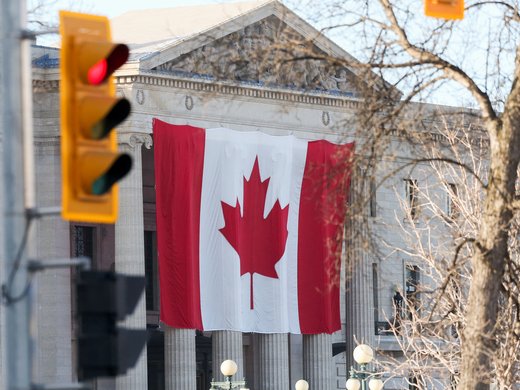Negative interest rates could be the biggest cultural export from continental Europe since David Guetta. The Bank of Canada embraced the fad in December when it reset its foreseeable zero lower bound rate to negative 0.5 percent from 0.25 percent. Canada’s central bank hasn’t actually gone there yet. Governor Stephen Poloz left the policy rate at 0.5 percent earlier this month. But fashion-forward Japan showed no such reservations. On Jan. 29, the Bank of Japan took the plunge, setting a rate of minus 0.1 percent on new reserves private lenders stash at the central bank in excess of their regulatory requirements.
Japanese bond yields dropped to record lows, the stock market rose, and the yen fell almost 2 percent against the U.S. dollar. The surprise decision was contentious. Four of the nine members of the Bank of Japan’s policy committee opposed the move. Governor Haruhiko Kuroda was among the supporters, however, re-enforcing the seriousness with which he takes his quest to end Japan’s long struggle with deflation. Ultra-low interest rates should push savers into riskier investments and keep downward pressure on the value of the yen. Theoretically, economic growth and faster inflation will follow.
There are doubts about how well that theory holds when interest rates hover around zero. If aging savers in Japan wanted to dabble in stocks, they probably would have done so by now. Kit Juckes, a foreign-exchange analyst at the French bank Societe Generale, couldn’t resist the irony of the fact that three of the five central banks that have opted for negative rates oversee economies known for their huge current-account surpluses. He is uncomfortable about what that says about the state of the global economy.
“Germany, Switzerland and Japan, the three great current-account powers of the post Bretton Woods era, whose surpluses have financed the frivolity of baby-boomer Anglo-Saxons, are being told in no uncertain terms to stop saving,” Juckes wrote in a note to his clients. “Whether it works or not matters less than the fact the disinflationary forces in the global economy are so entrenched that these central banks feel the need to set off on this path at all, following a trail of crumbs as they head for the gingerbread house.”
The Bank of Japan’s decision came within days of announcements from the U.S. Federal Reserve and the Reserve Bank of New Zealand that they would leave their interest rates unchanged. Not because these policy makers were untroubled, mind. The Federal Open Market Committee said it was "closely monitoring global economic and financial developments,” implying concern over China and the surge in the value of the U.S. dollar. The Reserve Bank of New Zealand Governor Graeme Wheeler said in a statement that uncertainty had increased because of slower growth in China and other emerging markets. He reiterated that a weaker exchange rate would be “appropriate” for New Zealand, adding that he “may” have to cut interest rates this year to ensure he meets his inflation target.
The week’s events are fodder for the currency warmongers. I have resisted this metaphor, and will continue to do so. Central banks are doing little more than following their mandates. If there is damage, it is the result of friendly fire, not an outright attack.
However, it is getting difficult to ignore Reserve Bank of India Governor Raghuram Rajan’s suggestion that his counterparts are caught in a loop of “competitive easing.” He has urged central banks to break the cycle before they make things worse. The Fed’s decision in December to raise its policy rate from zero heralded a return to normalcy. The Bank of Japan’s choice to go negative suggests normal may now be a place that none of us recognize.


